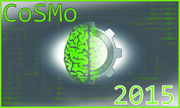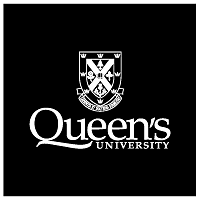CoSMo 2015
This page contains course materials for the CoSMo 2015 summer school.
Contents
- 1 Introduction - overview of sensory-motor control
- 2 How to model tutorial
- 3 DREAM database - Shared data and models for CoSMo projects
- 4 How to write papers
- 5 Coding & decoding
- 6 Motor learning & control
- 7 Multisensory processing
- 8 Computational Methods in Neuroscience
- 9 Reach and grasp mechanisms
- 10 Final Project Presentations - Jul 10, 3:30-6:30pm and 7:30-9:30pm
Introduction - overview of sensory-motor control
Jun 29-30
Lecturers: Gunnar Blohm, Paul Schrater, Konrad Kording, John van Opstal, Pieter Medendorp
Konrad, Weiji, Dan book
book
Blohm slides part 1 - computational anatomy
Schrater slides part 1 - decision making
Schrater slides part 2 - sensory-motor systems
Blohm slides part 2 - sensory-motor processing underlying eye movements
van Opstal syllabus - linear systems theory and answers to exercises part 1 and part 2
van Opstal slides 1 - linear systems theory
van Opstal slides 2 - linear systems in sensory-motor control A
van Opstal slides 3 - linear systems in sensory-motor control B
van Opstal slides 4 - Laplace transformation
van Opstal slides 5 - The saccadic system
Afternoon tutorial 1 - Bayesian decoding (Jun 29)
Bayesian decoding tutorial and related Data set
Afternoon tutorial 2 - Saccades (Jun 30)
Saccade models (Simulink code)
Example of additional ways to implement a saccade model using Matlab linear systems toolbox or direct integration of the differential equations underlying the linear systems approach: Simple saccade model
How to model tutorial
Jun 29 (evening)
Lecturers: Gunnar Blohm, Paul Schrater, Konrad Kording
Jun 29 - Jul 10
Curtesy: Konrad Kording
You can get the DREAM project from Gunnar on a USB drive. DREAM can also be downloaded piece-wise (data sets, models, tools, and documentation) from CRCNS: http://crcns.org/data-sets/movements/dream/downloading-dream. You will need to create an account on CRCNS to be able to download the project files.
If you want "all" of DREAM (models, tools, and documentation), click here: AllDream.zip
- If you're familiar with svn and would like info/credentials for code in the repository, contact Ben Walker
Here's the latest version of LoadDreamPaths.m. (This script should work for all OSes.)
Here is a description of data sets currently in Dream. Dream is growing, but this list is accurate as of the time of the summer school (click on the link to access the related publication).
- Burns -- reaching with head tilt and left/right visual perturbations
- Corbett -- reach trajectory predictions based on EMG and gaze movements
- Fernandes -- reaching with uncertain and rotated midpoint feedback
- Flint -- decoding of reaching movements from local field potentials
- Kording -- reaching with uncertain midpoint feedback
- Mattar 07 -- generalizing from one, two or multi targets to another direction
- Mattar 10 -- reaching to a distance (short/long), generalizing to the other one (long/short)
- Ostry -- move in force field, get an estimation of where the hand is
- Scott -- monkey (no spike), center out: even and not evenly distributed targets, also a forward/back
- Stevenson -- center out, monkey with neural time stamps
- Thoroughman -- reach adaptation to perturbations with different complexity
- Vahdat -- movement in force field with FMRI scans pre/post learning
- Wei 08 -- visual perturbations, cursor shown only at target
- Wei 10 -- movement in differing force fields
- Young -- movement time stayed the same, but distance changed; fast, medium, slow reaches.
How to write papers
Jun 30 (evening)
Lecturer: Konrad Kording
Coding & decoding
Jul 1
Lecturers: Joern Diedrichsen, Nikolaus Kriegeskorte
Please read the following papers BEFORE the tutorial: Ejaz, et al., 2015 and Khaligh-Razavi & Kriegeskorte, 2014
Niko's slides
Joern's slides - Part 1
Joern's slides - Part 2
If you would like to apply these methods, please refer to this paper. The link to the Matlab code can be found within the paper. Accompanying tutorial videos can be found here.
Motor learning & control
Jul 2
Lecturers: Stefan Glasauer, John van Opstal
Stefan's lectures
Accompanying code
Multisensory processing
Jul 3-4
Lecturers: Kathy Cullen, Bart Krekelberg
Kathy's linear sensory-motor control slides
Kathy's Non-linear sensory-motor control slides
Bart's lecture slides - sensory-motor processing
Bart's demo files
Pyr tools
Bart's suggested further readings - part 1
Bart's suggested further readings - part 2
Afternoon tutorial 1 - VOR (Jul 3)
Tutorial material
Afternoon tutorial 2 - gain fields (Jul 4)
Gain field tutorial
Computational Methods in Neuroscience
Jul 6-7
Lecturers: Sophie Deneve, Robert van Beers
Sophie's slides - spike coding
Rob van Beers slides - motor adaptation
Afternoon tutorial 1 - spike coding (Jul 6)
Implementation of spike coding in a single neuron and networks of neurons as described here (see also supplementary materials).
Here is some solution code.
Afternoon tutorial 2 - motor adaptation (Jul 7)
Tutorial instructions
Papers related to the tutorial
Exercise solutions
Reach and grasp mechanisms
Jul 8-9
Lecturers: Hans Scherberger, Pieter Medendorp
Pieter's slides - reaching
Hans' slides - grasping
Tutorial 1 - reference frame transformations (morning)
Tutorial instructions
Matlab code
Explanation of solution
Solution Matlab code
Tutorial 2 - PRR single unit encoding/decoding (afternoon)
Data will be distributed on a memory stick (65Mb).
Final Project Presentations - Jul 10, 3:30-6:30pm and 7:30-9:30pm
Instructions: Every group will have a 30min slot (15min presentation, 15min questions). The research question, hypotheses and rationale for the choice of the approach should be clearly presented. Models, simulations, results, discussion etc should be detailed enough for everyone to follow.

